Mark Anthony Neal's Blog, page 1082
June 6, 2011
The Late Geronimo Ji Jaga (Pratt) Talks COINTELPRO
Honoring A Panther: Five Reasons Geronimo Pratt Matters Today by Alexis Garrett Stodghill | NewsOne
The death of Geronimo Pratt has shocked leaders in the black community who have quietly looked up to this revolutionary since his time with the original Black Panthers. As a prominent Panther leader, Pratt fell victim to what many believe was an FBI plot to destroy this political group when he was convicted of murder in 1972. While in prison, Pratt became an inspiration for many blacks seeking to break free of the shackling systems of corrupted justice that are manipulated to hold us down. The late Johnnie Cochran himself, drawn to the symbolism of Pratt's cause, helped to get his conviction overturned, calling this 1997 accomplishment "the happiest day of my life practicing law."
What an amazing man. Geronimo Pratt's untimely death at the too-young age of 63 gives us pause, and a cause for listing some of the many highlights of this hero's life. Here are the top five reasons Geronimo Pratt's life and legacy matter today:
1. The former Minister of Defense for the Black Panther Party, Geronimo Pratt was also the godfather of Tupac Shakur, one of the most important figures in hip-hop history.
2. During his 27 years of imprisonment for a wrongful murder conviction, Geronimo Pratt served as an emblem of injustice who spurred political activists in this country to action in a similar way that Nelson Mandela did in South Africa.
3. Despite being wrongly jailed for a crime he did not commit, upon his release Pratt refused to devolve into bitterness. He exemplified inspiring spirituality in the manner of Dr. Martin Luther King by stating: "I don't think bitterness has a place. I'm more understanding… Understanding doesn't leave any room for bitterness or anger."
4. After being freed from prison, Pratt dedicated his life to serving the African community he joined when he moved to Tanzania. As a further expression of his dedication to others, Pratt worked with the country's United African Alliance Community Center in Arusha to empower African Youth. Pratt transformed what could have been bitterness into community-building action.
5. Pratt also served two tours of duty in Vietnam, serving his country in such a manner that even the most conservative American would be proud. Ultimately, Geronimo Pratt was a patriot, working to make our country the best it could be, using whatever means necessary — as both a "real" soldier, and a soldier-revolutionary.
As an icon of liberation and a worker for human liberty, Geronimo Pratt will always be remembered. A former Black Panther colleague, Pete O'Neal, had this to say about his friend:
"He's my hero. He was and will continue to be… Geronimo was a symbol of steadfast resistance against all that is considered wrong and improper. His whole life was dedicated to standing in opposition to oppression and exploitation. … He gave all that he had and his life, I believe, struggling, trying to help people lift themselves up."
May this hero rest in peace.
***
A former writer and editor at BlackVoices.com, Alexis Garrett Stodghill has also written for The Atlanta Post, Clutch Magazine, Coco & Creme, and The BVX. She was also the founding producer of BlackPlanet.com. Follow Alexis on Twitter: @lexisb
Published on June 06, 2011 04:52
June 5, 2011
The Legacy of Gil Scott-Heron
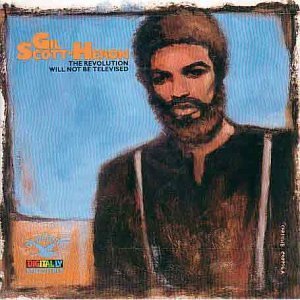
A Tribute to Gil Scott Heron
The Advocates | WLTH 1370am (Gary, Indiana)with Attorneys Tony Walker, Trent A. McCain, and Richard Leverett
Guests: Minister Conrad Tillard, Sr. Pastor of Nazarene Congregational Church, a United Church of Christ (UCC)
Mark Anthony Neal, Professor, African & African American Studies, Duke University.
Published on June 05, 2011 08:45
June 4, 2011
Ray Bryant Goes Home
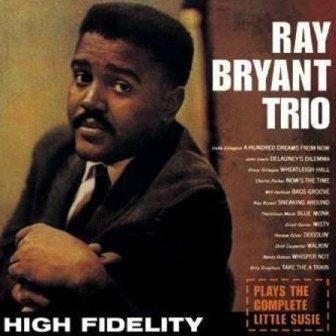
Ray Bryant, Jazz Pianist, Dies at 79 By Nate Chinen | The New York Times
Ray Bryant, a jazz pianist whose sensitivity and easy authority made him a busy accompanist and a successful solo artist, beginning in the mid-1950s, died on Thursday. He was 79.
His wife of 20 years, Claude Bryant, said he died at New York Hospital Queens after a long illness. He lived in Jackson Heights, Queens.
Mr. Bryant had a firm touch and an unshakable sense of time, notably in his left hand, which he often used to build a bedrock vamp. Even in a bebop setting, he favored the ringing tonalities of the gospel church. And he was sumptuously at home with the blues, as a style and a sensibility but never as an affectation.
All of this contributed to his accomplishment as a solo pianist. His first solo piano album was "Alone With the Blues," in 1958, and he went on to make a handful of others, including "Alone at Montreux," "Solo Flight" and "Montreux '77." His most recent release, "In the Back Room," was yet another solo album, recorded live at Rutgers University and released on the Evening Star label in 2008.
Raphael Homer Bryant was born on Dec. 24, 1931, in Philadelphia, and made his name in that city during its considerable postwar jazz boom. Along with his brother, Tommy, a bassist, he played in the house band at the Blue Note Club in Philadelphia, which had a steady flow of major talent dropping in from New York. (Charlie Parker and Miles Davis were among the musicians they played with there.) In short order Mr. Bryant had plenty of prominent sideman work, both with and without his brother.
One early measure of his ascent was the album "Meet Betty Carter and Ray Bryant," released on Columbia in 1955. It was a splashy introduction for him as well as for Ms. Carter, the imposingly gifted jazz singer. It was soon followed by "The Ray Bryant Trio" (Prestige), an accomplished album that introduced Mr. Bryant's composition "Blues Changes," with its distinctive chord progression.
That song would become a staple of the jazz literature, if less of a proven standard than "Cubano Chant," the sprightly Afro-Cuban fanfare that Mr. Bryant recorded under his own name and in bands led by the drummers Art Blakey, Art Taylor and Jo Jones.
Mr. Bryant had several hit songs early in his solo career, beginning with "Little Susie," an original blues that he recorded both for the Signature label and for Columbia. In 1960 he reached No. 30 on the Billboard chart with a novelty song called "The Madison Time," rushed into production to capitalize on a dance craze. (The song has had a durable afterlife, appearing on the soundtrack to the 1988 movie "Hairspray," and in the recent Broadway musical production.) He later broke into the Top 100 with a cover of Bobbie Gentry's "Ode to Billie Joe," released just a few months after the original, in 1967.
But Mr. Bryant's legacy never rested on his chart success or his nimble response to popular trends. It can be discerned throughout his own discography and in some of his work as a sideman, notably with the singers Carmen McRae and Jimmy Rushing, and on albums like Dizzy Gillespie's "Sonny Side Up," on Verve. "After Hours," a track on that album, begins with Mr. Bryant and his brother playing a textbook slow-drag blues.
Along with his wife, Mr. Bryant is survived by a son, Raphael Bryant Jr.; a daughter, Gina; three grandchildren; and two brothers, Leonard and Lynwood. Mr. Bryant's sister, Vera Eubanks, is the mother of several prominent jazz musicians: Robin Eubanks, a trombonist; Kevin Eubanks, the guitarist and former bandleader on "The Tonight Show With Jay Leno"; and Duane Eubanks, a trumpeter.
Published on June 04, 2011 16:44
Philip Rose, 'Raisin' and 'Purlie' Producer, Dies at 89
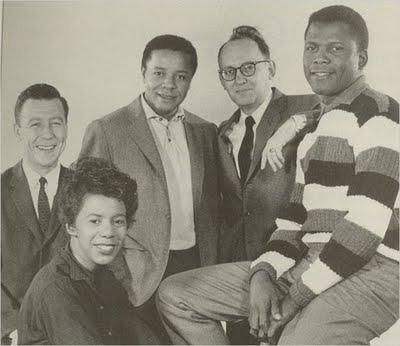
Philip Rose, 'Raisin' and 'Purlie' Producer, Dies at 89 by Bruce Weber | The New York Times
Philip Rose, who as the producer of Broadway shows like "A Raisin in the Sun" and "Purlie Victorious" advanced the cause of black playwrights and actors and helped widen the scope of American theater to include stories of blacks and other minorities, died on Tuesday in Englewood, N.J. He was 89.
His death, at the Lillian Booth Actors Home of the Actors Fund, came after a stroke, his wife, Doris Belack Rose, said.
A former singer and a record company executive, Mr. Rose was a producing novice when he and David J. Cogan, an accountant, brought "Raisin" to the stage, first to New Haven in 1958 and then to Broadway in March of the next year. Mr. Rose had known the playwright, Lorraine Hansberry, since they had both worked in a summer camp in the Catskills, he as a singer on the entertainment staff, she in the dining room. She confessed to him that she had literary dreams.
"And he said to her, 'I hope you do become a writer, because you're a lousy waitress,' " his wife recounted in an interview on Wednesday. "That cemented the friendship."
Ms. Hansberry showed him early versions of a play that told the story of a black Chicago family's aspirations to middle-class respectability and the eventual dashing of their dreams. He later offered to produce it.
"And she said, 'What does that mean?' " Mrs. Rose said. "And he said, 'I haven't a clue, but we'll find out together.' "
The first play by a black woman to open on Broadway, and the first Broadway play with a black director (Lloyd Richards), "Raisin" had a cast that included the future stars Sidney Poitier and Ruby Dee. It received terrific reviews, ran for well over a year, spurred interest in black theater and, as The New York Times drama critic Frank Rich wrote on its 25th anniversary, "changed American theater forever."
Mr. Poitier, who also starred in a 1961 film version of the play, said in an interview on Wednesday that Mr. Rose was a fine judge of acting talent.
"He would give actors a page or two to read," Mr. Poitier said, "and in watching that actor, he could see what rested behind the words, which gave him a good measurement of the power that actor had."
In 1961 Mr. Rose produced "Purlie Victorious," a farcical sendup of race relations set in a Southern town, written by Ms. Dee's husband, Ossie Davis. Directed by Howard Da Silva and starring Mr. Davis, Ms. Dee, Alan Alda and Godfrey Cambridge, the play ran more than seven months and inspired a musical, "Purlie," which itself became a hit in 1970. Mr. Rose again produced, and he collaborated on the book with Mr. Davis and Peter Udell.
"I'm so grateful he was on the scene," Ms. Dee said on Wednesday. "He was responsible for a major shift in the theater, for the inclusion of so many African-Americans on Broadway."
Mr. Rose was also a pioneer in untraditional casting. In 1964 he produced Bill Manhoff's two-handed comedy, "The Owl and the Pussycat," a romance about a pseudo-intellectual who works in a bookstore and a model/actress who is also a prostitute. Mr. Rose hired a white actor, Mr. Alda, and a black actress, Diana Sands, who had appeared in "Raisin." Controversy ensued.
"I asked myself, 'Is Diana's color going to keep her from getting the role?' " Mr. Rose said in an interview with The Times. " 'No,' I said to myself, and I managed to persuade the playwright and others to make the break. I happen to think that Sidney Poitier would make a great Hamlet. Should he be denied the part because the others in the company might be white?"
Philip Rosenberg — he changed his name when he entered show business — was born on July 4, 1921 on the Lower East Side of Manhattan. When he was a teenager his father, Max, moved to Washington and opened a haberdashery. Philip abandoned his studies at Brooklyn College to rejoin his family. After briefly pursuing a singing career — he was a baritone — he worked as a record executive and founded a label, Glory Records, which released pop and R&B music in the 1950s.
In addition to his wife, an actress whom he married in 1946, Mr. Rose is survived by a brother, Jack Rosenberg, and his sisters Sylvia Smolkin, Pearl Yabroff and Rose Diamond, all of the Washington area.
Among his other Broadway credits, Mr. Rose directed and helped produce the 1975 musical "Shenandoah," for which he shared a Tony Award as a writer of the book; and he directed and wrote the book for "Comin' Uptown" (1979), a musical adaptation of Dickens's "A Christmas Carol," starring Gregory Hines.
In his 2001 memoir, "You Can't Do That on Broadway!," Mr. Rose wrote that working as a bill collector in Washington's black neighborhoods introduced him to black culture and the plight of black Americans.
"Why I was so open to becoming this person, I have no idea," he wrote. "I also don't know why any of those people, given the circumstances under which they met me, cared enough to reach out, to enlighten me, and to point me in a new direction. What I do know is how grateful I am for what was done for me by a group of generous, remarkable people who happened to be black. And while I don't know where or who they now are, I know that for anything important I may have done or will do with my life, I am trying to say 'thank you' to them."
Published on June 04, 2011 16:03
Black Music Month 2011: The Thom Bell Sessions
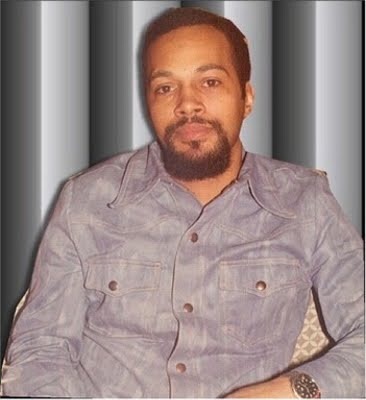
Black Music Month 2011 : The Thom Bell Sessions by Mark Anthony Neal
When Kenneth Gamble and Leon Huff were finally inducted into the Rock and Roll Hall of Fame in 2008, it put again placed a focus on the legacy of "Philly" Soul. The success, in recent years, of Philadelphia based acts like Boyz II Men, Jill Scott, The Roots, Musiq, Eric Roberson, Jaguar Wright, Kindred the Family Soul and of course the timeless presence of Patti Labelle has helped give the very idea of Philly Soul contemporary cache. But all too often memories of the classic days of Philly Soul fail to recall the impact of Philly based doo-wop acts, which featured high-pitched lead vocalist and many of the forgotten musicians and producers that gave the city its signature sound.
At the height of their power, Gamble and Huff managed Philadelphia International Records (the groundbreaking black boutique label) and presided over a music publishing company known as "Mighty Three Publishing." The third member of that triad was Thom Bell, a stanchly independent, Caribbean bred musician and producer who always resisted joining the Philly International's camp. Instead Bell chose to free-lance giving him the liberty to work with artists that he wanted to work with. The product of that independence are definitive Soul recordings from The Delfonics, The Stylistics and The Spinners. Here's a playlist of some of the best of the Thom Bell Sessions:
"La-La (Means I Love You)"—The Delfonics (1968) "Can You Remember?"—The Delfonics (1968)
The Delfonics were the first Philly Soul group that Thom Bell had regular success with. They would never reach the super-group status of groups like The Stylistics and The Spinners, but like their New York City based peers The Main Ingredient, they were the quintessential East-Coast Soul harmony group of the late 1960s. "La-La (Means I Love You)", co-written with William Hart, from the Delfonics album of the same title, is just timeless, from the simplicity of the lyrics: "Now I don't wear a diamond ring and I don't even have song to sing, all I know is la-la-la-la-la-la-la-la…la mean, I love you," to the earnestness of lead singer William Hart's soaring falsetto. "Can You Remember?" was a product of the same session. The genius of both songs song was not lost on a young Michael Jackson—a big fan of Hart—who recorded a handful of Bell compositions including "Can You Remember?" on the Jackson Five's first Motown recording Diana Ross Presents and "La La" on The Jackson Five's ABC (1970) recording.
"People Make the World Go 'Round"—The Stylistics (1971)
As would be a regular occurrence with Bell, once he did all that he could with a group, he would move on to the next challenge. That next challenge was Russell Thompkins, Jr. and the Stylistics. Thompkins, who is one of the most legendary falsettos of all time, fit perfectly into Bell's Philly-Soul sensibilities. What Bell was able to bring into the mix (literally) that he didn't with The Delfonics were lush arrangements. With new writing partner Linda Creed in tow, the Stylistics recorded a string of classic recordings including, "You Make Me Feel Brand New," "Betcha by Golly Wow" and "Break Up to Make Up". Marvin Gaye, Aretha Franklin and Al Green, notwithstanding, Bell's work with the Stylistics in the early 1970s was the definitive Pop-Soul sound of the era—a sound you hear a generation later in the work of Antonio "LA" Reid and Kenny "Babyface" Edmonds. But I always go back to that very first album, when the stakes were less, and find the brilliance of "People Make the World Go Round." Powerful and subtle social commentary (with the winds of change literally blowing in the background) with an insurgent energy that aimed to find the human connection of it all. The song was never more powerfully employed that in the opening segment of Spike Lee's period piece Crooklyn.
"You Are Everything"—The Stylistics (1971)
"Today I saw somebody who looked just like you/she walked like you do/I thought it was you/As she turned the corner/I called out your name, I felt so ashamed, when it wasn't you…" Damn. Thom Bell wrote those lyrics only a short time after mistakenly believing that he saw someone he knew in the street. These lyrics to again highlight how Bell and Creed often took simple everyday experiences and turned them into lyrics and melodies that just tugged at the heart. I mean damn, who hasn't thought they saw a long lost boyfriend and girlfriend walking across the street or on a passing subway train and then spent the next hour lamenting about what could have been?
"I'll be Around"—The Spinners (1973)
When signed to Motown in the late 1960s, The Spinners were little more than an afterthought. After a still youthful Stevie Wonder provided them with the gift, "It's A Shame" in 1970, the group bounced to Atlantic (sans co-lead vocalist GC Cameron) with Philippe Wynne joining Bobby Smith on lead vocals. As the story goes, Atlantic offered Thom Bell the opportunity to record any act on their roster (which at the time included Donny Hathaway and Aretha Franklin) and he choose The Spinners. The rest is history, as the B-side of the first Spinners/Bell single, "I'll Be Around" can still be heard on cell phone commercials 35-years after its release. Classics like "Could It be I'm Falling in Love," "Mighty Love" and everybody's favorite mama song, "Sadie" would soon follow.
"Mama Can't Buy You Love"—Elton John (1979)
On the surface, Elton John and Thom Bell seem like an odd pairing, but John was a big fan (like David Bowie) of American Soul music, and the Philly Sound in particular; John's 1975 classic "Philadelphia Freedom," was in part a tribute to Mighty Three. Though the so-called Thom Bell Sessions did not result in a full album—Bell and John reportedly butted heads in what was John's first session minus writing partner Bernie Taupin—a 12-inch featuring the hit "Mama Can't Buy You Love, which was John's first hit in three years. The full Thom Bell Sessions, with six completed songs was released in 1989/
"Silly"—Deniece Williams (1981) "It's Gonna Take a Miracle"—Deniece (1982)
One of the reasons that Bell desired to be more of an independent producer, was the often failing health of his wife; as the professional pressures began to mount, Bell left Philadelphia for Seattle, working much less frequently. One artists who compelled him to return back to the studio was Deniece Williams, one time backing vocalist for Stevie Wonder. Williams had experienced moderate success, most notably with the single "Free" from her debut This is Niecy (1976), before Bell joined her to work on My Melody in 1981. That session produced the now classic "Silly." Bell and Williams reteamed a year later for Niecy, which produced the cross-over hit "It's Gonna Take a Miracle." The song was originally recorded by the Royalettes in 1965 and later by Laura Nyro and Labelle, in a session that was produced by Bell's Mighty Three partners, Gamble and Huff. The song earned Williams her first Grammy Award nomination.
"Old Friend"—Phyllis Hyman--Living All Alone (1986)
Bell's writing partner Linda Creed was diagnosed with breast cancer in the late 1970s and as Bell began to retreat from day to day activities in the recording industry, Creed sought other writing partners, including Michael Masser, with whom she wrote "The Greatest Love of All" (initially recorded by George Benson, but a major pop hit for Whitney Houston in 1986, the same year that Creed succumbed cancer. In the backdrop of Houston's success, the late Phyllis Hyman released her career defining release Living All Alone, which included one of the last major collaborations between Creed and Bell, with "Old Friend."
Published on June 04, 2011 08:53
June 3, 2011
Loaded Guns, Loaded Metaphors: Rihanna's "Man Down" Video
Loaded Guns, Loaded Metaphors: Rihanna's "Man Down" Video by Janell Hobson | Ms. Magazine
Rihanna has a genius for controversy. As soon as the music video for her latest single, "Man Down," premiered this week on BET's 106 & Park, it created an instant backlash from various groups demanding it be banned from television. However, the outcry is not about depictions of S&M fantasies or a same-sex kiss or even passive acceptance of domestic violence. This time, she is being condemned for promoting murder.
I have to wonder if I've seen the same video.
I see a revenge story by a rape survivor, who makes it clear that, no matter what a woman wears or how she dances or if she walks alone at night, rape is wrong and deserves punishment. Rihanna reiterated this message when she broadcast on Twitter:
Young girls/women all over the world … we are a lot of things! We're strong innocent fun flirtatious vulnerable, and sometimes our innocence can cause us to be naïve! We always think it could NEVER be us, but in reality, it can happen to ANY of us! So ladies be careful and #listentoyomama! I love you and I care!
While I understand the moral concerns about popular messages that condone violence, the hue and cry over this video seem to reflect a deeper anxiety. After all, if parental groups worry that pop stars such as Rihanna are encouraging young women to seek violent retribution, then I wish they would also condemn blockbuster action movies, video games and comic books that preach the same message to young boys.
Or is it perfectly okay for action figures like Thor or Batman or a regular American G.I. to seek justice through violent means? And what does it mean for the larger public to loudly condemn a fictional scene of a rape victim grabbing her gun and pulling the trigger on her perpetrator, especially when other violent representations in media are not condemned but championed?
Read the Full Essay @ Ms. Magazine
Published on June 03, 2011 13:46
June 2, 2011
Black Music Month 2011: "Bessie Smith is saying 'Kiss My Ass. Kiss my Black unruly ass'"
From the cinematic adaptation of Amiri Baraka's (Leroi Jones) Dutchman , which opened in 1964 and won an Obie Award. The film version, released in 1967 was directed by Anthony Harvey and starred Shirley Knight and Al Freeman, Jr. (who portrayed Elijah Muhammad in Spike Lee's Malcolm X).
Published on June 02, 2011 08:01
Black Music Month 2011: Patti Labelle Pays Tribute to Oseola McCarty
Ms. Oseola McCarty -- the humble washerwoman who became The University of Southern Mississippi's most famous benefactor -- passed away Sept. 26, 1999, after a bout with cancer. In 1995 Ms. McCarty donated $150,000 from her life savings to the university. Stephanie Bullock was the first recipient of the McCarty Scholarship. At the time of her gift, Ms. McCarty remarked, "I want to help somebody's child go to college...I just want it to go to someone who will appreciate it and learn. I'm old and I'm not going to live always." Patti Labelle paid tribute at the 1996 Essence Awards.
Published on June 02, 2011 07:23
June 1, 2011
Esperanza Spalding and the Future of Fusion

Destroying Jazz: Esperanza Spalding and the Future of Fusion by Michael Gonzales | Wax Poetics
With the release of Miles Davis's revolutionary records In a Silent Way in 1969 and Bitches Brew the following year, the genius trumpeter, with the invaluable assistance of an amazing crew of young collaborators, created the musical future shock later called fusion.
Best described as improvised music that incorporates rock, funk, and soul into the grooves, fusion "revamped…Black music's avant-garde through the use of electronics," musician and cultural critic Greg Tate explained in 1983.
However, when rock critic Lester Bangs wrote that In a Silent Way "gives you faith in the future of music," he had no idea the prophecy of his words. A few years later, Miles Davis's alumni, including keyboardist Herbie Hancock, pianist Chick Corea, guitarist John McLaughlin, and saxophonist Wayne Shorter, formed their own innovative groups Head Hunters, Return to Forever, Mahavishnu Orchestra, and, of course, Weather Report.
Yet, from fusion's early days as a noisy musical contender, many narrow-minded jazz aficionados and critics were unable to appreciate the sonic change when acoustic became suddenly antiquated. Appalled by upstarts infiltrating their music with electric guitars, Moogs, wild percussion instruments, tape loops, and synthesizers, purists referred to the new musical movement as anti-jazz. In Considering Genius (2006), jazz traditionalist and essayist Stanley Crouch stated that fusion was "the aesthetic death valley" of jazz.
Yet, while the genre became quite popular, not many women instrumentalists ventured into fusion. With the exception of Alice Coltrane, Bobbi Humphrey, Joni Mitchell, Patrice Rushen, Meshell Ndegeocello, and a few others, fusion has long remained a male-dominated field.
Read the Full Essay @ Wax Poetics
Published on June 01, 2011 15:44
Oprah's Stealth Philanthropy
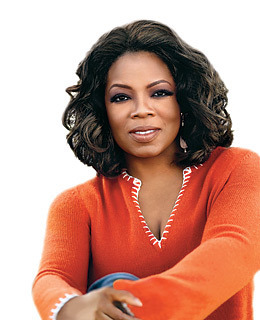
Oprah's Stealth Philanthropy in Chicago by Natalie Moore | WBEZ 91.5
Chicago and Oprah Winfrey go hand-in-hand.
She built a TV empire here, and there's no doubt that the media mogul has been a booster for the Windy City.
Oprah lovers make the pilgrimage to her studio, contributing to tourism with dining and hotel stays along the way.
But her legacy is bigger than an economic engine to Chicago.
Oprah's philanthropic legacy in Chicago is vast, but under the radar.
There aren't that many places or things named after Oprah in Chicago, but one of them's going to last a long time. I'm looking for it in downtown Chicago's Millennium Park, a showpiece on Michigan Avenue. Here it is Oprah Winfrey name in all caps on a wall. It lists the founders of this enormous park.
Oprah gave a million dollars of her own money to make this park happen, but that's a fraction of her largesse.
The exact figures for Oprah's philanthropic impact in Chicago are hard to pinpoint, but one person with some insight on the big picture – is former mayor Richard M. Daley.
Listen Here
Published on June 01, 2011 15:35
Mark Anthony Neal's Blog
- Mark Anthony Neal's profile
- 30 followers
Mark Anthony Neal isn't a Goodreads Author
(yet),
but they
do have a blog,
so here are some recent posts imported from
their feed.



